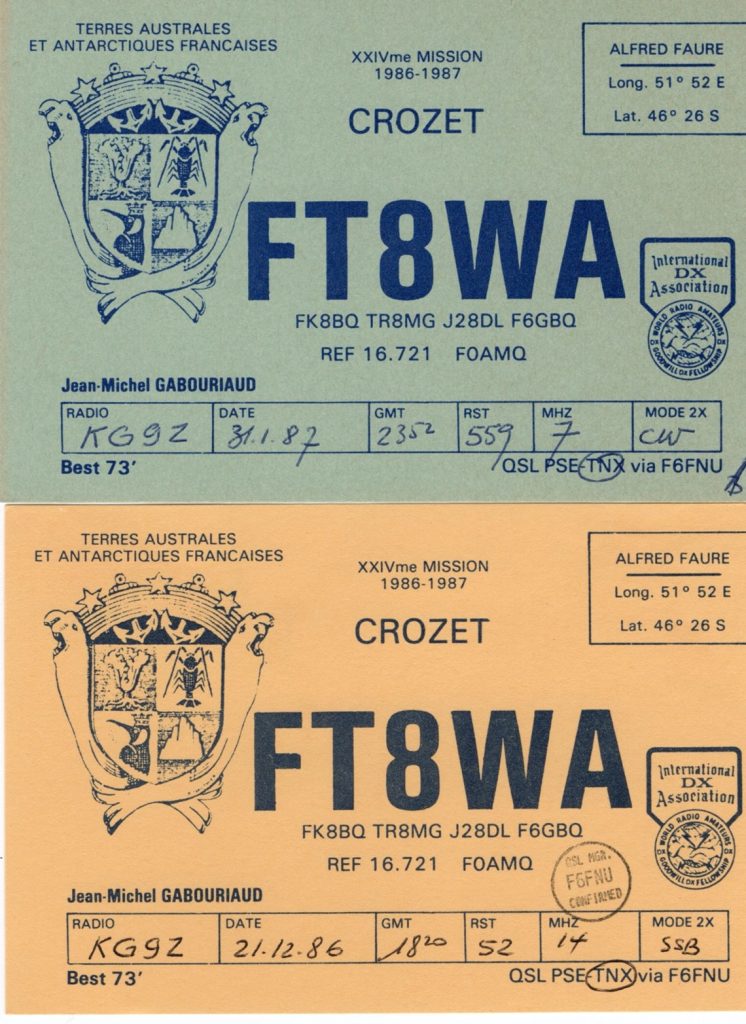For those trying to “work the world,” the announcement of a DXpedition to a “Top-Ten” DXCC Entity, especially during these uncertain times, is a rather huge deal. Up the ante a notch to a “Top-Three” entity and you can practically hear the sound of hams stampeding to circle the dates on their calendars. While the recent ups and downs of activating Bouvet Island (#2) have been well documented, and North Korea (#1) will likely retain its DXCC unicorn status barring a major shift in political philosophy, #3 on the list (worldwide) has been somewhat forgotten in the mix. But not for long.
Thierry Mazel, F6CUK, is planning to be the sole DXpeditioner operating from one of the Crozet Islands (IOTA AF-008) between December 2022 and March 2023. This sub-Antarctic archipelago in the southern Indian Ocean (1,500 miles from the coast of Antarctica) consists of six rugged, steep-cliffed islands, none of which will ever be confused with Maui, or even Pitcairn, for that matter.
Part of the French Southern and Antarctic Territories, the cold and soggy archipelago may not be hospitable to humans, but it’s party central for four types of penguins, which number in the millions (macaroni, king, eastern rockhopper, and gentoo). It also hasn’t been hospitable to watercrafts over the years, having been the sight of numerous shipwrecks. Of literary note, the island group receives a couple of brief mentions in Moby-Dick.
Other than the Alfred Faure scientific research station continuously operated on Ile de la Possession Island since 1963 (where F6CUK will operate from), the Crozet Islands are uninhabited—and for good reason. The islands (actually the #2 most-wanted in North America per Clublog) are battered by rain 300 days a year, and anyone brave enough to set up a station there can expect unrelenting wins of 45 MPH with sudden gusts up to 93 MPH. As Freddy Mercury might have crooned, three months on Crozet is no pleasure cruise.
The harsh climate is only one reason why the last DXpedition from Crozet Islands was in 2009—a solo venture (FT5WQ) by Florentin Bard, F4DYW. To temper expectations about his DXpedition, F6CUK explained that the islands’ volcanic rock surface, covered only by grass, moss and lichens, makes it “impossible to secure any mast in the ground.” Further, as a UNESCO protected area, getting permission to set up from the island requires that the operator leave barely a tread of environmental footprint behind and that, per the operating permit, all equipment that comes ashore must be “thoroughly cleaned so that no pollen, seeds, or new animals reach the island.” That means F6CUK must employ only environmentally-friendly gear, no guy wires, and no 40 and 20 meter four squares as was originally proposed. Along with co-planner F6EXV, F6CUK is working on the best possible antenna solution given the constraints so as many hams as possible can make the Crozet Islands an ATNO.
“The only possibility that the administration allowed was to have an attachment point to an existing building, and have wire antennas from there. No beam!” F6CUK wrote.
Plans are to concentrate on CW and SSB, with FT8 mostly for low bands if an 80M dipole can be installed.
QSL Cards
For most of the avid DXers at DX Engineering, Crozet Islands will hopefully be an ATNO. Scotty Meyer, KG9Z, DX Engineering customer service/technical support specialist, managed to contact this rare entity twice (40M CW and 20M SSB) during the FT8WA 1986/87 DXpedition from the Alfred Faure station. Only three entities remain on KG9Z’s ATNO list: Pratas Island (#6), Scarborough Reef (#4), and North Korea.

Want to get a jump on breaking through the pileups and snagging a rare one? Start upgrading your DXing prowess at DXEngineering.com, where you’ll find transceivers, amplifiers, antennas, CW keys and paddles, coaxial cable, and a whole lot more.

